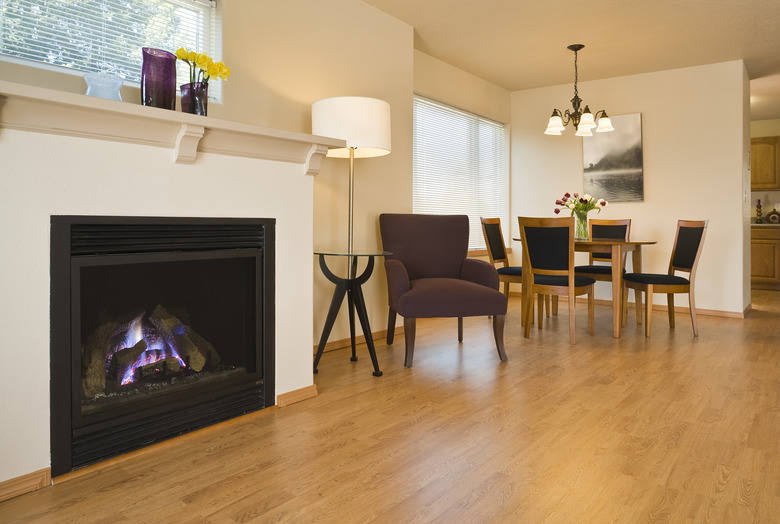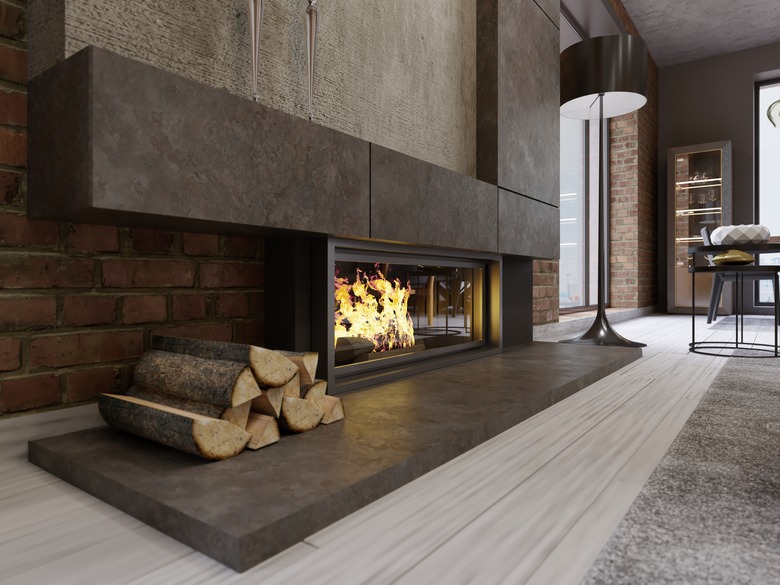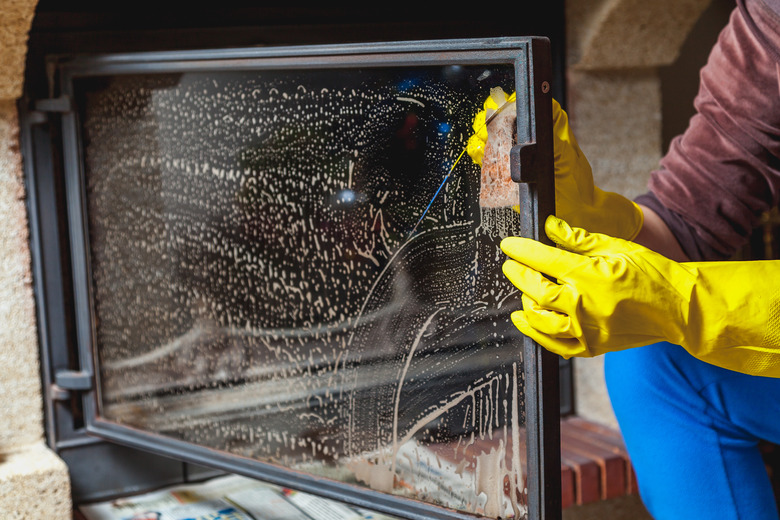The 8 Most Common Gas Fireplace Problems — And How To Repair Them
We may receive a commission on purchases made from links.
Homeowners tend to be squeamish about repairing gas appliances themselves — so when they need to repair a gas fireplace, they usually call a pro. That's a healthy strategy, but it's an expensive one since the service bill will often be $125 or more even before the technician identifies the problem and fixes it. The flat service call fee in addition to the repair fee is a fact of life that keeps the appliance repair company in business.
However, a number of common gas fireplace problems arise from a lack of maintenance, and some other equipment malfunctions occur because of electrical problems that are easy to address. Some repairs related to equipment in the fireplace itself are doable by homeowners with DIY skills, although any problem that calls for disassembly of a natural gas or propane gas valve needs professional attention.
Tip
If you suspect a gas leak, you should definitely call a company that specializes in gas fireplace repair. You need a technician certified by the National Fireplace Institute or with similar credentials — or a plumber with a gas-fitting license — to repair a gas leak safely and ensure the leak won't recur.
Vented Gas Fireplace Problems
Vented Gas Fireplace Problems
There are several types of gas fireplaces that fall into two categories: those that are vented and those that aren't. The two vented types of fireplaces are B-vent, which exhausts combustion gases through a chimney, and direct vent, which typically exhausts gases through a coaxial pipe that passes through a wall.
A B-vent model is the one most resembling a wood fireplace and is in fact often installed inside an existing fireplace. Like a wood fire, it creates an updraft that draws air from the room, and it's the type most likely to get clogged from dust, pet dander, and other contaminants in the room air. Consequently, it needs more maintenance than other types of gas fireplaces.
1. Burning Smell
Efficient gas combustion doesn't produce an odor, but both natural gas and propane have a rotten egg odor purposely added to warn you of a gas leak. If you smell that, turn off the gas and call for repair services. On the other hand, if you detect the odor of something burning, it's probably coming from debris buildup that has collected around the gas burner. This is most likely to happen with fireplaces that have log sets.
2. Weird Sounds While the Burner Is On
If you hear crackling, popping, or hissing sounds while the burner is on, the burner and log set are dirty. The sound is coming from the combustion of stray materials that have collected on the log set and burner.
3. The Pilot Won't Light
If you can't get the burner to start, the first suspect is the pilot light. A gas fireplace can have an electronic igniter, but most have a standing pilot, which is a small flame that burns continuously. Standing pilots waste a small amount of gas, but they ensure you can use the fireplace during a power outage.
4. The Pilot Works, but the Burner Won't Light
If you see the standing pilot burning or you hear the sound of the electronic spark ignitor but the burner won't ignite, there could be a malfunction with the gas valve, which needs professional repair service.
5. The Standing Pilot Went Out
Sometimes, a strong draft will blow out the pilot, and you have to relight it. The procedure for relighting it is fairly standard, although it may differ slightly from model to model, so it's always important to check the owner's manual.
6. The Remote Doesn't Work
If your fireplace has a remote control, and it's not working it's likely that you'll need new batteries.
Ventless Gas Fireplace Problems
Ventless Gas Fireplace Problems
Instead of venting combustion gases outdoors, ventless fireplaces recycle them in a closed combustion chamber and ideally emit only carbon dioxide and water vapor into the room. The qualifier "ideally" is added here because there's a small possibility of harmful gases, such as carbon monoxide, being emitted. For this reason, ventless fireplaces are illegal in some places.
7. People Experience Dizziness or Nausea
Dizziness and nausea are symptoms of carbon monoxide poisoning, which is something that needs to be addressed immediately.
8. High Humidity and Mold
Because one of the byproducts of ventless gas combustion is water vapor, it's common for humidity to rise in the room in which it's situated. In a sealed room without much air circulation, this can result in the formation of condensation on walls and furniture, and mold can grow. This is similar to what happens inside air conditioning ducts in a warm room.
Gas Fireplace Maintenance
Gas Fireplace Maintenance
You probably won't need to call a technician who can repair a gas fireplace if you give your fireplace regular maintenance. A good maintenance routine should include a periodic tune-up by a licensed gas fireplace service technician, who can troubleshoot and fix problems most homeowners aren't qualified to handle. Like any gas appliance, a fireplace needs a little TLC now and then to keep everything in working order and the fire burning bright, and it doesn't take much.
- Do a regular cleaning: Turn off the gas and wait for the fireplace to cool down. Then remove the front cover if there is one and vacuum soot and dirt from the log set, the burner, and the walls of the combustion chamber. You can use any handheld vacuum for this. Wash the screen or cover and the area around the front of the fireplace with a solution of all-purpose liquid soap and warm water. An abundance of soot on the cover or walls of the combustion chamber usually indicates an overabundance of gas and a lack of oxygen, so follow the manufacturer's instructions for adjusting the air-to-gas ratio.
- Look for damage: If you have a ceramic log set or a pile of lava rocks, check them for cracks, and if you find any, replace the damaged rocks or logs. You might see whitish deposits on the glass cover. These are from minerals in the condensation that have settled there, and you can usually remove them by spraying them with vinegar or scrubbing with baking soda and water.
- Check the pilot: After cleaning is finished, turn on the gas, start the pilot, and check the flame. It should be steady and bluish in color. If it's green or orange, the pilot tube may be partially obstructed. You can usually clean it yourself with a blast of compressed air after you once again turn off the gas and let things cool down.


